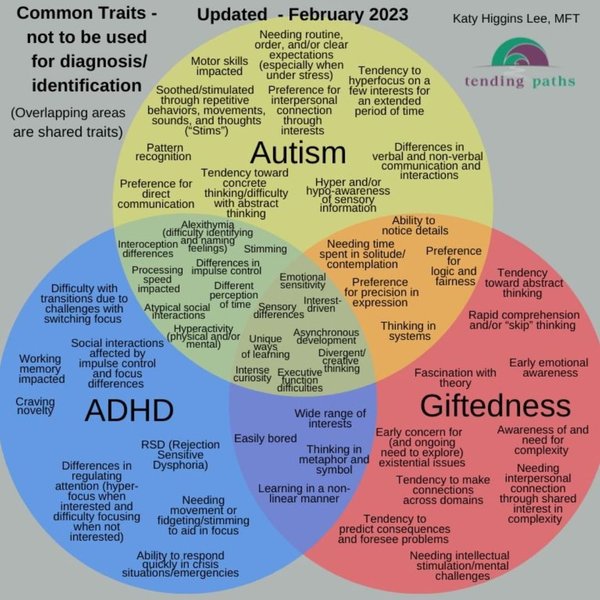
I created this Venn Diagram a little over a year ago and it's been making the rounds again, so I thought I'd share the updated version (from February). As I originally posted, I fit into all three categories, so it was challenging for me to tease apart the nuanced differences and where they overlap. Therefore, I looked at many sources to compile this list. Despite this, there may be varying opinions about the accuracy of these distinctions. Please remember that this is for informational purposes only and not intended to be used for diagnosis/identification. Autism, ADHD, and Giftedness are the currently accepted names, but all three names are problematic and are inaccurate descriptions of the actual experience. Some additional notes: 1. The traits listed are common traits of these neurotypes, but a person does not need to have all the traits listed. Actually, most ADHDers, Autistic, and Gifted people will not have all the traits listed for each neurotype. 2. As I wrote on the diagram, the overlapping areas are shared traits, which means they are traits that commonly occur in both or all three neurotypes. The overlapping areas are NOT listing traits that only show up when someone is multiply neurodivergent. Image description in comments.





